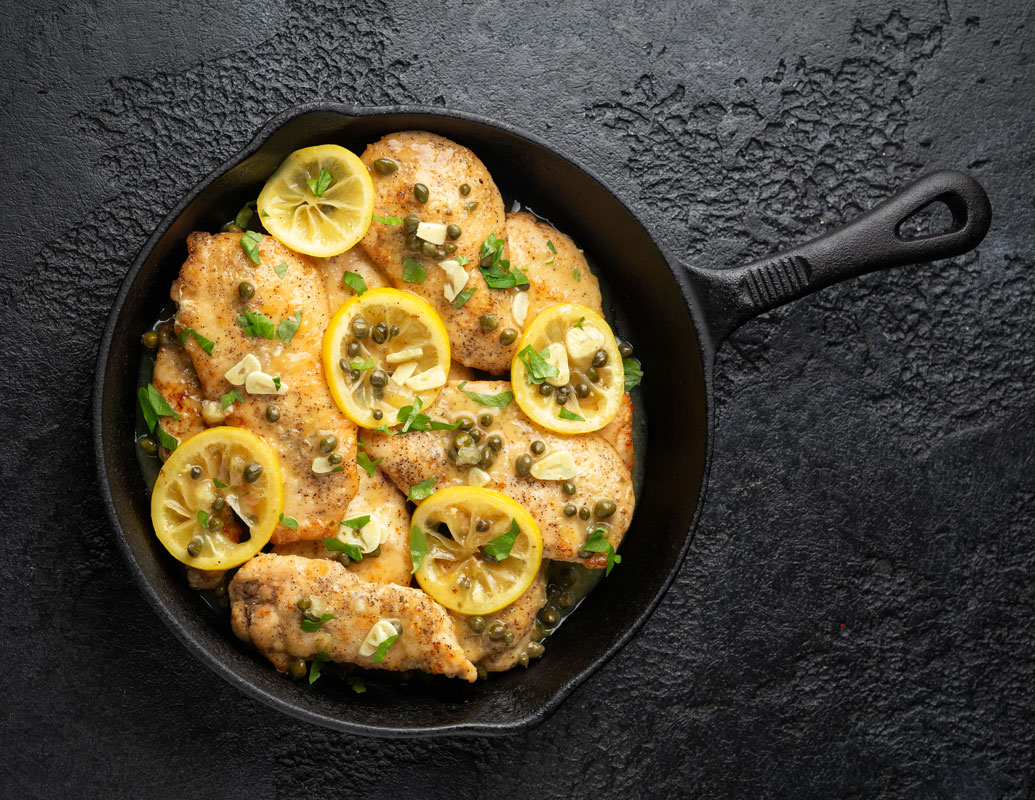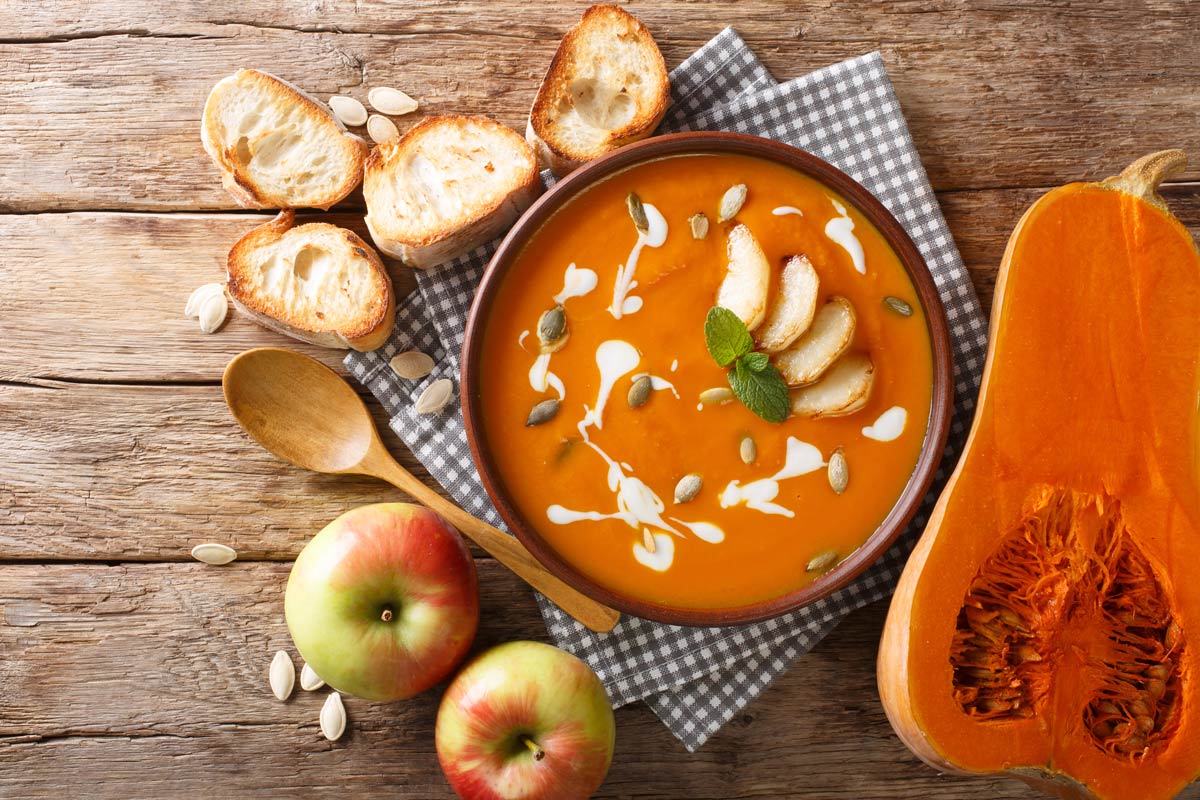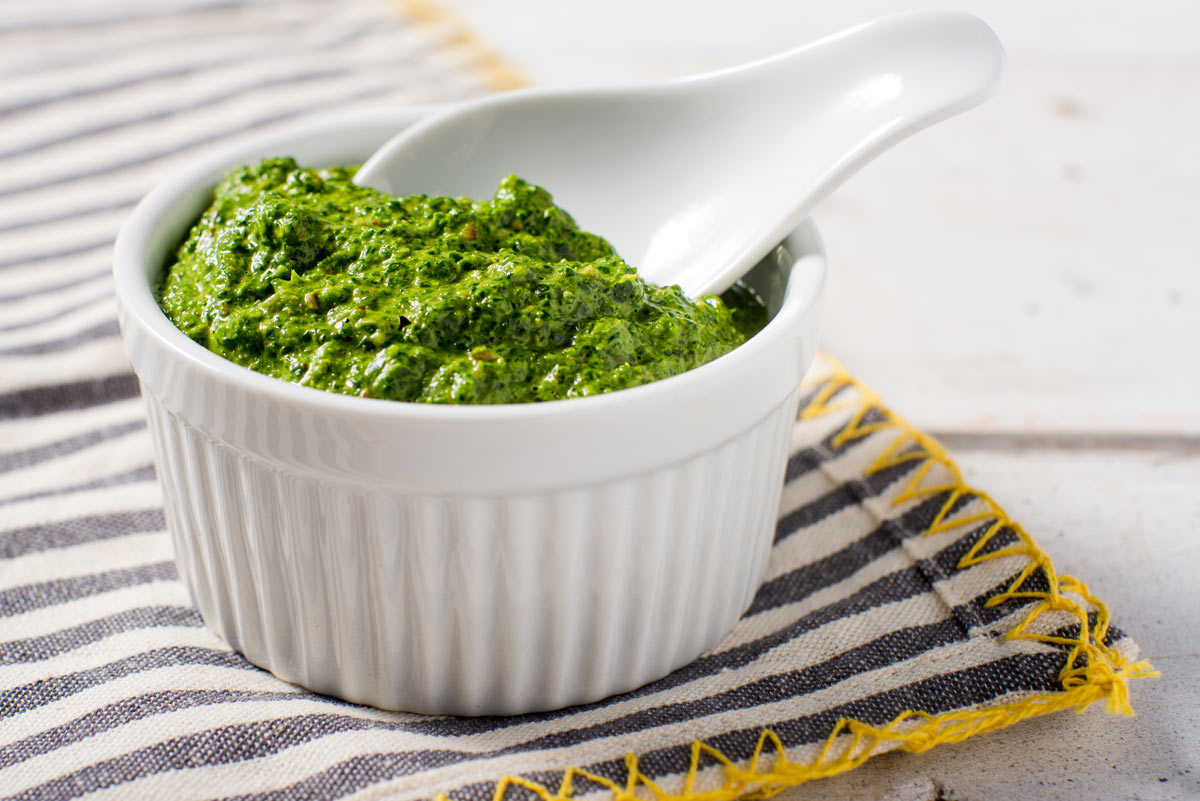Chicken Piccata Recipe, Spotlight on Capers and Cutlets, Ward Off Prostate Cancer with Fruits and Veggies, Plus the Health Benefits of Physical Fitness
As the weather gets warmer, farmers markets—and maybe even your own garden—will soon be brimming with fresh fruits and vegetables. That’s especially welcome news after the release of research on the protective benefit of these foods when it comes to avoiding prostate cancer. After reading the second study in this newsletter, you’ll want to take a brisk walk right on over to the nearest market to fill up your larder. Fresh vegetables are a wonderful accompaniment to this delicious chicken dish.
Chicken Piccata
 Chicken Piccata
Chicken PiccataThe origin of chicken piccata is somewhat in dispute—some say that it was an Italian-American take on a classic veal recipe from the Boot. Certainly, it’s long been a mainstay on many Italian restaurant menus here in the US. No matter who claims credit for it, one thing is certain: it’s delicious and easy to make all in one pan. A side of your favorite pasta and a plate of spring asparagus complete the menu!
Ingredients
- 2 pounds skinless, boneless chicken breasts
- 3/4 cup white whole wheat flour, more if needed
- 1 teaspoon fine sea salt
- 1 teaspoon freshly ground black pepper
- Extra virgin olive oil, as needed
- 6 garlic cloves, peeled and sliced
- 1 cup white wine
- 1 cup chicken broth, homemade or low sodium store-bought
- 1 lemon, halved
- 1/4 cup capers, plus 1 tablespoon of their brine
- 2 tablespoons butter, cut into 8 pieces
- 1/4 cup chopped flat-leaf parsley
Directions
Step 1
Slice each chicken breast horizontally into 2 or 3 thin cutlets. In a deep pie plate, mix the flour, salt, and pepper. Heat a very large skillet and, when hot, add 2 tablespoons of olive oil. Dredge the cutlets in the flour mixture one at a time, shake off any excess, and place them in the pan. Continue until your skillet is full. Don’t crowd the cutlets: work in batches if needed, adding 2 more tablespoons of oil to the skillet before adding the next batch. When the cutlets have browned on the bottom (after about 5 minutes), flip and continue cooking for another 3 minutes (the thinner the cutlet, the less time each will take). Transfer the cutlets to a large clean plate near your stovetop.
Step 2
Add another tablespoon of olive oil to the skillet and sauté the garlic until fragrant and lightly browned. Add the wine and broth, and whisk the liquids to get up the fond on the bottom of the pan. Bring to a simmer and add back the cutlets (submerge them as much as possible) along with the capers and brine. Continue cooking until the liquid reduces by half and the chicken is cooked through. Squeeze in the juice of one lemon half and stir in the butter. Cook for 2 more minutes and sprinkle with the parsley. Cut the remaining lemon half into thin slices and serve along with 2 or 4 cutlets per person.
Yields 4–6 servings

Healthy Ingredient Spotlight
Capers: An unsung Mediterranean flavor booster
Chances are the only time you might have seen capers—apart from chicken piccata—is alongside chopped red onion on a smoked fish platter. But their salty, briny taste can enhance many dishes.
Capers are the green flower buds of the capparis spinosa, a prickly bush native to the Mediterranean region. They’re picked, dried, and then either pickled in brine—the way you’re most likely to find them on supermarket shelves—or packed in salt. Capers come in various sizes, from tiny nonpareils to large capotes.
Experiment by adding them to eggs, tuna salads, potato salads, and tomato sauces, especially those that also include green olives, like puttanesca. If you’re using the large capers, chop them coarsely before adding; otherwise, fold them in whole. Adding a teaspoon or so of their brine will intensify their taste. And always taste any caper-enhanced dish before you add any extra salt—you might not need it.

Quick Kitchen Nugget
Cutting Cutlets Made Easy
Thinly sliced cutlets cook quickly and stay moist and tender. If you can’t find breasts already cut scallopini style or just want to save the extra cost that brings, you can easily prep chicken breasts yourself at home. First, give the cutlets a deep chill in the freezer for about 20 minutes—this makes them easier to slice. While you’re waiting, set out a platter for placing the slices and grab your raw-only cutting board and a sharp chef’s knife (remember: it’s a dull knife that’s dangerous).
Working one breast at a time, place it on your cutting board and place the palm of one hand over the top of the breast. Very carefully, slice the breast horizontally in half if not very thick, or into thirds or fourths if thick (the first slice may be smaller in length than the rest, but should be the same thickness). Now you’re ready to proceed with your recipe.

For Your Best Health
Fruits and Vegetables May Ward Off Prostate Cancer
Two studies done at the University of South Australia and published in the journal Cancers found that men who eat micronutrient-rich colorful fruits and vegetables on a regular basis are less likely to be diagnosed with prostate cancer; consuming these foods also speeds up recovery for men who undergo radiation treatment for the disease. The research was the first to evaluate blood concentrations of micronutrients and trace elements with respect to prostate cancer in men in South Australia.
Researchers compared levels of micronutrients in the blood of prostate cancer patients with the levels in a healthy control group and found that the cancer patients had low levels of lutein, lycopene, alpha-carotene, and selenium, and high levels of iron, sulfur, and calcium. In particular, they found that men with plasma concentrations lower than 0.25 micrograms/milliliter for lycopene and/or lower than 120 micrograms/milliliter for selenium have an increased risk of prostate cancer and are likely to be more sensitive to the damaging effects of radiation treatment, should cancer occur.
Foods rich in lycopene include tomatoes, melons, papayas, grapes, peaches, watermelons, and cranberries. Selenium-rich foods include white meat, fish, shellfish, eggs, and nuts. Study coauthor Permal Deo, PhD, says eating foods that are naturally rich in lycopene and selenium is preferable to taking supplements, where the benefits are limited, according to previous studies. “Our recommendation is to adopt a Mediterranean diet enlisting the help of a dietitian because people absorb nutrients in different ways, depending on the food, the digestive system, the person’s genotype, and possibly their microbiome,” he explains.
Other risk factors, such as ethnicity, family history, and age, have previously been linked to prostate cancer. “There is strong evidence that being overweight and tall increases the risk of prostate cancer,” adds Dr. Deo. “Diets high in dairy products and low in vitamin E may also increase the risk but the evidence is less clear.” Vitamin E is found in plant-based oils, nuts, seeds, fruits, and vegetables.

Fitness Flash
When Half Is a Lot Better Than None
We already know that physical activity has numerous health benefits, and leading health organizations recommend that adults do at least 150 minutes of moderate-intensity activity or 75 minutes of vigorous-intensity activity a week to get them. But now, an international team led by researchers at the University of Cambridge and published in the British Journal of Sports Medicine found that there are still benefits to doing at least half that amount: just 11 minutes a day—75 minutes a week—of moderate-intensity physical activity, like brisk walking.
To explore the amount of physical activity necessary to have a beneficial impact on several chronic diseases and premature death, researchers from the Medical Research Council (MRC) Epidemiology Unit at the University of Cambridge carried out a systematic review and meta-analysis, pooling and analyzing data from all the published evidence. This let them bring together studies that on their own did not provide sufficient evidence, and sometimes disagreed with each other, to provide more robust conclusions.
In total, they looked at results reported in 196 peer-reviewed articles, covering more than 30 million participants from 94 large study cohorts, to produce the largest analysis to date of the association between physical activity levels and risk of heart disease, cancer, and early death.
The researchers found that, outside of work-related physical activity, two out of three people reported moderate-intensity activity levels below 150 minutes per week and fewer than one in 10 did more than 300 minutes per week. They also found that beyond 150 minutes per week, additional benefits in terms of reduced risk of disease or early death were marginal.
On the other hand, doing just half this amount came with significant benefits. Accumulating 75 minutes per week of moderate-intensity activity brought with it a 23 percent lower risk of early death and reduced the risk of developing cardiovascular disease by 17 percent and cancer by 7 percent. For some specific cancers, the reduction in risk was greater: head and neck, myeloid leukemia, myeloma, and gastric cardia cancers were between 14 percent and 26 percent lower risk. For other cancers, such as lung, liver, endometrial, colon, and breast, a 3 to 11 percent lower risk was observed. Looked at another way, if everyone managed at least 75 minutes per week of moderate-intensity physical activity, around one in 10 early deaths, one in 20 cases of cardiovascular disease, and nearly one in 30 cases of cancer would be prevented.
Soren Brage, PhD, of the MRC Epidemiology Unit, says, “If you are someone who finds the idea of 150 minutes of moderate-intensity physical activity a week a bit daunting, then our findings should be good news. Doing some physical activity is better than doing none. This is also a good starting position: If you find that 75 minutes a week is manageable, then you could try stepping it up gradually to the full recommended amount.” As a reminder, moderate-intensity physical activity raises your heart rate and makes you breathe faster, but you should still be able to speak during the activity.
Leandro Garcia, PhD, of Queen’s University Belfast, adds, “Moderate activity doesn’t have to involve what we normally think of exercise, such as sports or running. Sometimes, replacing some habits is all that is needed. For example, try to walk or cycle to your work or study place instead of using a car, or engage in active play with your kids or grandkids. Doing activities that you enjoy and that are easy to include in your weekly routine is an excellent way to become more active.”
Get More Recipes In Your Inbox!


